What role can machinery play in the production of boutique coffee?

Professional coffee knowledge exchange more coffee bean information please follow the coffee workshop (Wechat official account cafe_style)
Sometimes, it is difficult to separate the concept of boutique coffee from handmade and small-scale things. We believe that human knowledge and care can produce some of the best coffee in the world. This is a human hand, not a machine.
There is no denying that human hands are essential for the production of quality coffee. However, if machinery can help them stabilize the production of boutique coffee and may even improve its quality, why not use every tool we can use?
In order to explore the more role that machines can play in the production of boutique coffee, I discussed it with experts from Ipanema Coffees in Brazil.
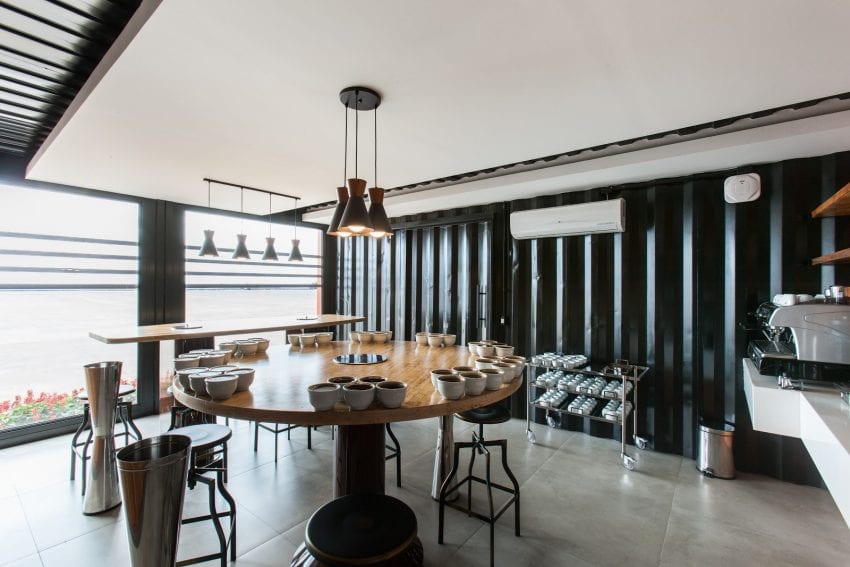
At the cup testing laboratory in Fazenda RioVerde, Minas Gerais, Brazil, an average of 200000 coffee samples come here each year. Photo Source: Ipanema Coffees
Which machines can be used for harvesting and processing?
Let's explore the whole process from coffee trees to coffee beans sold in bags.
1. Harvest
Harvesting coffee fruit from coffee trees can be done manually or by machine.
Christiano Borges, chief operating officer of Ipanema Coffees, told me that the best coffee comes from perfectly ripe cherries. "harvesting fully ripe cherries is almost impossible, or very expensive," he told me.
Large-scale producers in countries such as Brazil often use mechanical harvesters, while small-scale producers who work on uneven ground tend to pick by hand. When using a machine, the biggest challenge is to control the maturity of the harvested coffee cherries.
When picking by hand, the producer can only choose the ripe cherry and leave the immature cherry on the tree for later harvest. They can also discard overcooked or defective ones (however, not all small-scale producers do so. Some people use the branch peeling method, which is a faster method, which involves putting the hand on the root of the branch and pulling along the branch. Doing so will pull all the cherries, leaves and branches. This method is often favored by commercial coffee bean producers.
When harvesting with machines, producers cannot check coffee cherries in the same way. However, they can carefully select the fruit after harvest to ensure the percentage of ripe cherries. Some producers will harvest different batches on different days.
However, the use of machinery does not mean that these producers cannot produce boutique coffee. They just need to spend more time sorting the harvested coffee cherries. Producers must ask themselves which method is the most effective: reduce the labour force during the harvest so that they can pick coffee cherries faster or reduce the number of cherries discarded during sorting. Usually, it's a matter of farm size and economic scale.
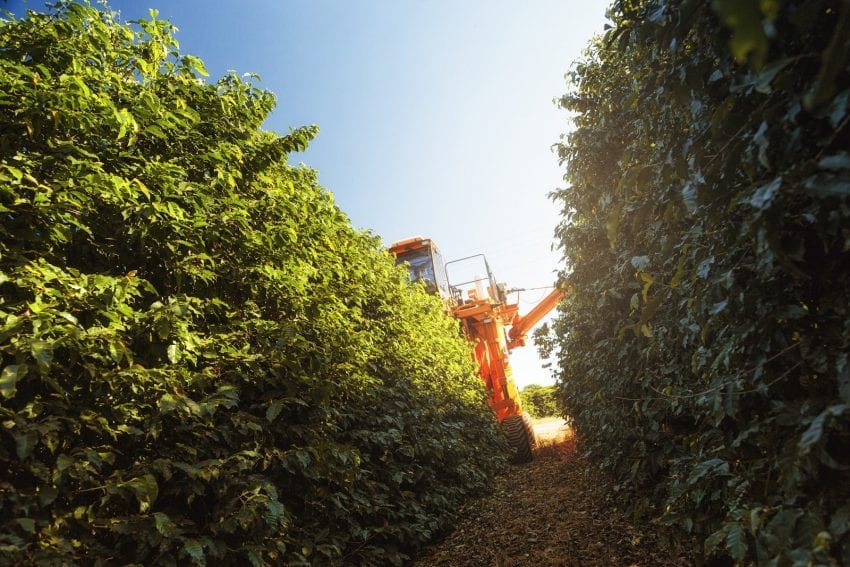
Ipanema Coffees farm uses machinery to harvest coffee cherries. Photo Source: Ipanema Coffees
two。 Wet treatment plant
Eduardo Tassinari is the agricultural director of Ipanema Coffees. He introduced their methods to me. "after the coffee cherry is picked from the tree and transported to the processing plant, it first goes through a round of washing. The washing machine is actually a separator. Lighter coffee cherries float on the water. Mung beans and ripe coffee cherries sink and transfer to another machine. "
But this is not the only machine that IpanemaCoffees uses in wet treatment plants. In 2012, they launched the Premiere Cru program on Fazenda Rio Verde in Mantiqueirade Minas, a mountain area of Minas Gerais. Our goal is to produce a large number of boutique coffee and micro batches with a variety of flavors. But to do it on a large scale, without sacrificing the quality or flavor consistency of the coffee beans, they decided to turn to machinery.
They are working with JM Estrada, a Colombian coffee maker, to develop dry and wet treatment equipment adapted to Brazilian conditions. They are also working with MultiScan, a Spanish company, to use machines originally developed to separate fresh olives for coffee.
Christiano told me, "the machine basically has two main goals: one is to choose, which means to separate beans in order to select the best coffee beans." In terms of maturity, material, size, weight and color. The second major goal is the drying of coffee. "
When producing boutique coffee, be sure to use the best coffee cherries. On small farms, this is usually done by hand. The working group will manually check the cherries at each stage, classify the cherries by quality, and remove any substandard cherries.
However, when a large amount of coffee needs to be processed, machines can help people manage their work correctly.
Machine sorting is also particularly useful for some batches. "We know the exact potential of each region, and we can prioritize regions according to their potential," Christiano said. This includes setting up equipment and processes to get the best results from each area. "
Luis Guillermo, design director of JM Estrada, told me, "I think the machine plays an important role in improving the quality of coffee, because the control of post-harvest coffee will be supported by high technology.
"the quality of coffee depends on the good management of the farm and the high-tech technology of post-harvest coffee processing."
3. Deal with
At this time, the sun-treated coffee goes directly into the drying stage. However, for washed and honey-treated coffee beans, the process is different.
"the second machine is the shell remover," Eduardo told me. He explained that the shell can be removed by friction. However, due to the hard skin of immature cherries, only ripe cherries are peeled. Unpeeled coffee cherries are reserved for the internal consumer market to ensure that they are not wasted.
Eduardo explained that the "peeled" cherries are dried with pectin, while washed coffee goes into the fermentor so that all the flesh can be removed. Careful monitoring of the fermentation tank can ensure that the fermentation is controlled and consistent.
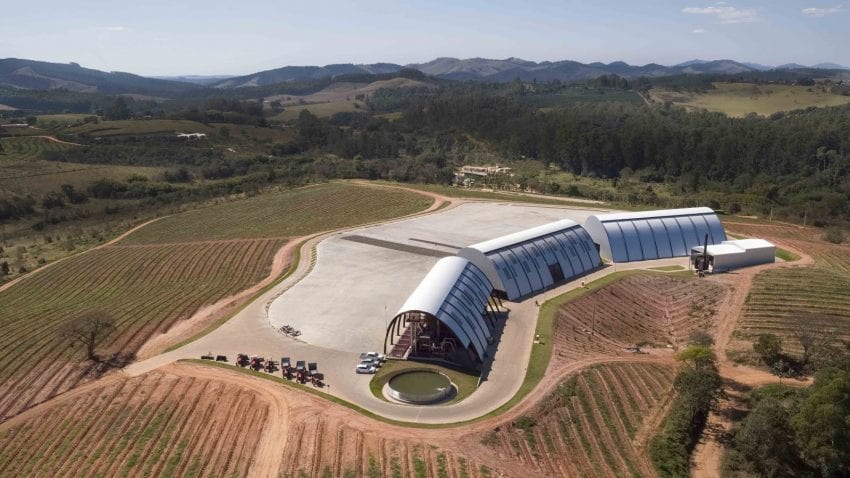
An aerial view of Fazenda Rio Verde's sunbathing ground. Photo source: Ipanema Coffees
4. Drying stage
Poor drying will reduce the harvest and processing effect. Too long and too much moisture can lead to moldy coffee beans, excessive fermentation and uneven taste-none of which are suitable for roasting, let alone if they find that batch of coffee beans contain more water than expected. After all, they pay by weight, and the water is not light.
Coffee beans can be dried mechanically, in a greenhouse or in the sun. If there is no machinery for drying, it can be dried in the open air or on an elevated bed.
Eduardo told me that the slow drying stage is the key to affecting the quality of coffee. However, according to the different treatment methods of coffee, it is best to mix the above methods.
It is also important to consider the local climate and conditions. Sometimes drying needs to be accelerated to avoid mold or excessive fermentation, especially in wet weather or when coffee beans are covered with pectin.
Rodrigo Rodrigues, Ipanema Coffees's industrial director, agrees. He told me, "Yes, some traditional coffee bean processing techniques are still in use. Let me give you an example: some coffee is 100% naturally dried, which is what we sometimes do in the process.
"it is possible to produce good coffee in the traditional way, but it takes a lot of time. And you have to take a big risk. If you dry on the sun field, it will be exposed to sunlight, Rain Water and moisture. So, can you do it? Yes, you can, but it's hard. "
Therefore, in large-scale production, he prefers to combine the above methods. Most of their batches of coffee are dried by the sun. However, the process is later done in the machine to control the temperature and moisture content more accurately.
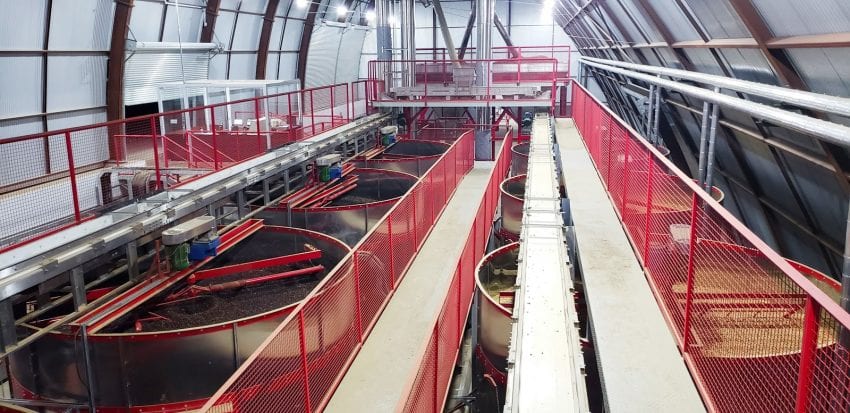
Upright dryer located in Fazenda RioVerde, Minas Gerais, Brazil. Photo Source: IpanemaCoffees
4. Purification, parchment removal and grading
Eduardo told me, "when the coffee is dry, it goes into a silo and is purified." There, it is stored for at least 30 days, sometimes even longer. Then it goes into the dry mill. "
It is here that IpanemaCoffees uses machines to remove parchment and then uses sieves to grade coffee beans by size.
But what about human factors?
No matter how good the machine is, if it is not used properly, it will not be able to produce quality coffee.
Rodrigo told me, "in our first year of working with the new equipment, we have been in touch with machine technicians so that we can maximize their role by analyzing our processes and understanding the performance of the machines. I would say this is excellent equipment, but if the calibration is not good, you will get very bad results. "
Sometimes the machine can be well calibrated-but only for one type of coffee. "one of the first machines on the wet production line was the pre-cleaning machine," Rodrigo said. They were "responsible for removing all impurities from the field coffee from the harvest, including leaves, sticks, dirt, impurities."
If used properly, such a machine can make the subsequent baking process easier. Stephen Hurst, managing director and founder of UK-based coffee supplier Mercanta, told me, "A seemingly trivial problem, such as pebbles or stones, metal fragments. For large roasters, this is not the biggest problem. But for many of our customers, this is a disaster, a nightmare. "
"the stones will be baked and bagged together, and then the bean grinder in the cafe will be destroyed. The bad things left over from the handling of these coffee beans will lead to endless follow-up questions. Therefore, the production of close to zero defects, classified by maturity, altitude selection of boutique coffee measures are indeed very important. "
He added, "We have hundreds of potential Brazilian suppliers, even on our small farm. We can choose who to buy at will. Therefore, it is not surprising that Ipanema has made a visionary and significant investment in Rio Verde's new facilities. And under the same conditions, machinery helps to 'downsize'. "
However, it is not enough for producers to invest in such machines. It is important that they also know how to calibrate it. "these machines are very efficient," Rodrigo continued, "but the airflow is adjustable, so the flow we call" vibration "also helps to remove these impurities. So, if I want to deal with some very dirty coffee beans with a lot of sundries, I need to adjust the machine. If I want to deal with coffee beans with less foreign bodies, I have to make another adjustment. "
The machine needs human expertise to understand exactly how each batch of coffee needs to be processed, and then make sure it receives the information.
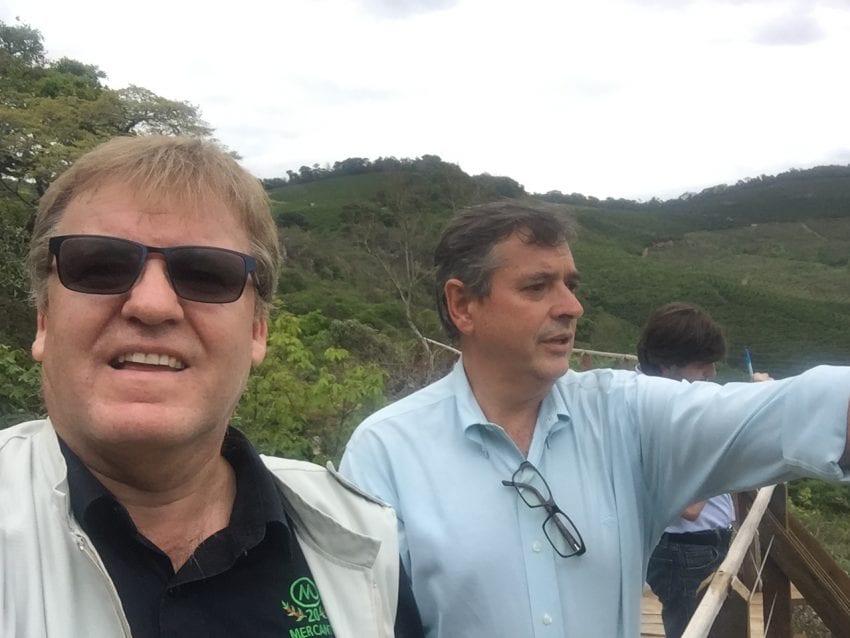
Stephen Hurst, founder of Mercanta, and WashingtonRodrigues, CEO of IpanemaCoffees, served as CEO in Fazenda RioVerde, Minas Gerais, Brazil. Photo Source: Stephen Hurst
Different environments, different solutions
It's not just that different coffee beans need to be treated differently. Each coffee producing area in the world has its own unique climate and production culture, which will determine how coffee is handled on farms and factories.
Luis is committed to adapting Colombian machines so that they can be used on Brazilian farms in cooperation with Ipanema Coffees. He told me that he had to do a lot of research on coffee processing in Brazil-and IpanemaCoffees also studied the Colombian method so that they could better understand the impact of the machine.
He told me, "our machines have been adjusted to improve the efficiency of classification and achieve better efficiency at Rio Verde Farm than in Colombia. This is because in Colombia this process applies to small farmers, while at Rio Verde Farm, the machine is suitable for processing large quantities of high-quality coffee. "
There are other factors that affect the ideal harvest and processing methods. Steep slopes make it more difficult for harvesting equipment to operate because coffee trees are close together or not lined up.
Coffee processing equipment is not plug and play. It is important for producers to understand exactly how it is designed and how best to apply it to specific farms and coffee.
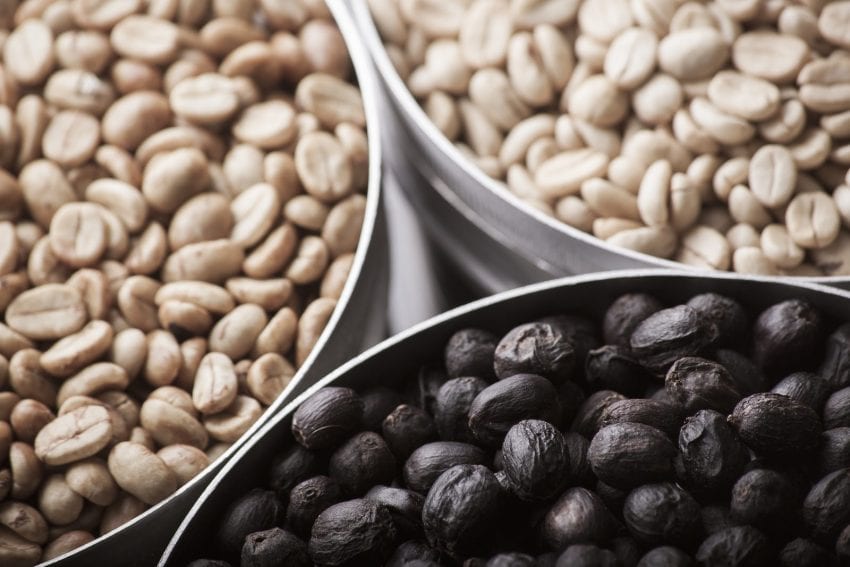
Coffee beans with different treatments. Photo Source: IpanemaCoffees
Andrey Savinov is the general manager of SFT Trading, a Russian supplier of raw beans based in Moscow. "over the years, we have become accustomed to the idea that micro-batches are largely a natural rarity," he said. This year, it may appear on specific farms. But it could easily disappear next year. Ipanema Coffee's Rio Verde project is the opposite. I call it a 'miniature factory'. "
He has been buying coffee at Ipanema Coffees for 14 years and says they use machines to make coffee is part of the reason he continues to buy. Because this ensures that coffee has the same quality and flavor year after year.
In the end, the machine, if used properly, can help maintain coffee consistency and improve productivity. On the contrary, the risk of uniformity is not a matter of coffee quality, but of production methods. Therefore, the key is still to implement the local understanding of coffee, farms and markets. The use of machinery is a combination of manpower and technology to ensure that the quality of coffee can be maintained at a high level.
The article was translated from: Perfect daily Grind
Important Notice :
前街咖啡 FrontStreet Coffee has moved to new addredd:
FrontStreet Coffee Address: 315,Donghua East Road,GuangZhou
Tel:020 38364473
- Prev
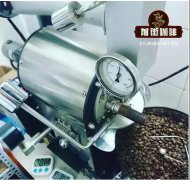
What chemical reactions take place in the process of baking beans?
Coffee itself is a kind of plant, how to show its sour, sweet, bitter, salty and other ever-changing flavor? The answer is that the raw coffee beans need to be roasted, that is, the raw coffee beans are heated in the container (roaster, hand net, etc.), and finally reach the appropriate degree of baking. Coffee beans have undergone earth-shaking changes in the process of roasting, but not just stir-fry them.
- Next

From "coffee + nap" to the best "coffee time", is coffee good for sleep?
Professional coffee knowledge exchange more coffee bean information Please follow the coffee workshop (Wechat official account cafe_style) love and hate often go hand in hand, coffee is such a good example, it can be described as the depth of love and hate. The taste of coffee is adorable, but caffeine compensation (Caffeine withdrawal) is disturbing. Used to be like some friends.
Related
- Beginners will see the "Coffee pull flower" guide!
- What is the difference between ice blog purified milk and ordinary milk coffee?
- Why is the Philippines the largest producer of crops in Liberia?
- For coffee extraction, should the fine powder be retained?
- How does extracted espresso fill pressed powder? How much strength does it take to press the powder?
- How to make jasmine cold extract coffee? Is the jasmine + latte good?
- Will this little toy really make the coffee taste better? How does Lily Drip affect coffee extraction?
- Will the action of slapping the filter cup also affect coffee extraction?
- What's the difference between powder-to-water ratio and powder-to-liquid ratio?
- What is the Ethiopian local species? What does it have to do with Heirloom native species?

